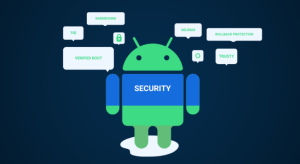
Worried about AI's growing capabilities and its potential to compromise your smartphone security? The future of phone hacking might be more sophisticated than you think.
What You'll Learn:
- How Artificial Intelligence is evolving for malicious purposes.
- Specific AI-driven techniques that could be used to hack phones.
- Practical steps to protect your devices from these emerging threats.
- Key AI security risks to be aware of in 2025 and beyond.
- Resources for staying informed about mobile security.
Understanding Can AI Hack Phones
The question of whether Artificial Intelligence (AI) can hack phones is no longer a hypothetical scenario but a burgeoning reality. As AI technologies advance, so do the methods by which they can be exploited for malicious activities, including unauthorized access to mobile devices.
Can AI Hack Phones Fundamentals
At its core, AI hacking leverages machine learning algorithms and sophisticated computational power to identify and exploit vulnerabilities in phone operating systems, applications, and network connections. Unlike traditional hacking methods that often rely on manual brute-force attacks or pre-written scripts, AI can learn, adapt, and evolve its attack strategies in real-time. This means an AI system could potentially discover new zero-day exploits faster than human researchers, making defenses harder to develop.
The fundamental principle involves training AI models on vast datasets of code, network traffic, and known vulnerabilities. Once trained, these models can:
- Analyze patterns: Identify subtle anomalies that might indicate a security weakness.
- Predict behavior: Forecast how a system might react to certain inputs, allowing for precise exploitation.
- Automate discovery: Rapidly scan for and test vulnerabilities across millions of devices.
- Generate sophisticated malware: Create polymorphic malware that constantly changes its signature to evade detection.
Key Concepts
Several key AI concepts are relevant to understanding phone hacking:
- Machine Learning (ML): The engine behind AI's ability to learn from data. In hacking, ML can be used for credential stuffing attacks, identifying optimal times to launch attacks, and even mimicking human behavior to bypass security measures like CAPTCHAs. For a deeper dive into ML concepts, you can explore resources on Coursera.
- Natural Language Processing (NLP): AI's ability to understand and generate human language. NLP can be used to create highly convincing phishing emails and SMS messages, making them incredibly difficult to distinguish from legitimate communications.
- Deep Learning (DL): A subset of ML that uses neural networks with multiple layers. DL can be applied to analyze complex biometric data (like voice or facial recognition) to find ways to bypass them, or to generate highly personalized social engineering attacks.
- Generative Adversarial Networks (GANs): Two AI models trained against each other. In a security context, one GAN could generate realistic fake data (e.g., fake user profiles for social engineering), while the other tries to detect it. This can be used to create highly sophisticated deepfakes for impersonation.
The landscape of AI-powered threats is constantly evolving. Staying updated on the latest developments in cybersecurity and AI is crucial. Resources like The Verge's cybersecurity section often cover these emerging trends.
Can AI Hack Phones Implementation
While the idea of AI hacking phones might seem abstract, its implementation involves concrete steps and strategies. Understanding these can help in developing robust defenses.
Getting Started
For malicious actors, “getting started” with AI-powered phone hacking involves acquiring or developing the necessary tools and data. This typically includes:
1. Access to AI frameworks: Libraries like TensorFlow or PyTorch are used to build and train ML models. Developers can find these on GitHub.
2. Vulnerability databases: Extensive knowledge of known software and hardware flaws is essential. Resources like the National Vulnerability Database (NVD) provide a starting point.
3. Training data: This can include captured network traffic, leaked credentials, or data scraped from public sources.
4. Exploitation frameworks: Tools that automate the process of delivering and executing malicious payloads once a vulnerability is found.
For defenders, getting started involves understanding the attack vectors and implementing preventative measures. This includes:
- Regular software updates: Keeping operating systems and applications patched is fundamental. For mobile development best practices, resources like React Native documentation can offer insights.
- Strong authentication: Employing multi-factor authentication (MFA) significantly hinders unauthorized access.
- Network security: Using VPNs and secure Wi-Fi connections can protect data in transit.
- Security awareness training: Educating users about phishing and social engineering tactics.
Best Practices
Implementing AI for phone security, or defending against AI-driven attacks, requires adherence to best practices:
- For Defenders:
- Employ AI-powered security solutions: Many cybersecurity firms now offer AI-driven threat detection and response systems that can identify anomalous behavior indicative of AI attacks.
- Behavioral analytics: Focus on monitoring user and device behavior for deviations from normal patterns, rather than just signature-based detection.
- Continuous monitoring and patching: The threat landscape changes rapidly, so proactive security is paramount. Regularly audit your systems and apply updates promptly.
- Data encryption: Ensure all sensitive data, both at rest and in transit, is strongly encrypted. You can learn more about encryption standards at W3C.
- For Attackers (Hypothetical & for understanding threats):
- Automated vulnerability scanning: Using AI to continuously search for new weaknesses in mobile platforms.
- Advanced social engineering: Crafting hyper-personalized phishing campaigns using NLP to exploit individual psychological profiles.
- Evasion techniques: Developing AI that can adapt to detection methods and avoid being flagged by security software.
Here's a comparison of traditional vs. AI-driven attack vectors:
| Feature | Traditional Hacking | AI-Driven Hacking |
|---|---|---|
| Vulnerability Discovery | Manual, time-consuming, often relies on known exploits | Automated, rapid, capable of finding novel exploits |
| Attack Sophistication | Script-based, often predictable | Adaptive, learns from defenses, highly personalized |
| Phishing/Social Engineering | Generic templates, often easily detectable | Hyper-realistic, context-aware, uses NLP |
| Malware Evasion | Signature-based, easily caught by updated AV | Polymorphic, self-modifying, AI-driven behavioral analysis |
| Scalability | Limited by human resources | Highly scalable, can target millions simultaneously |
Understanding these differences is key to preparing for future threats. For insights into the future of technology and security, Statista provides valuable data and reports.
Can AI Hack Phones Benefits and Results
While the term “benefit” usually implies positive outcomes, in the context of AI hacking, it refers to the advantages gained by the attacker and the results experienced by the victim.
Expected Outcomes
For malicious actors leveraging AI, the expected outcomes are:
- Increased success rate of attacks: AI's ability to adapt and learn means higher probabilities of breaching defenses.
- Stealthier intrusions: AI can make attacks harder to detect, allowing for longer periods of unauthorized access.
- Wider reach: AI can automate attacks, enabling a single actor to target a massive number of devices.
- Data exfiltration: Gaining access to sensitive personal and financial data.
- Device control: Potentially taking over a device for botnet activities, surveillance, or ransomware.
For end-users, the expected outcomes of an AI hack are overwhelmingly negative:
- Financial loss: Through fraudulent transactions or ransomware demands.
- Identity theft: Sensitive personal information being stolen and misused.
- Privacy violation: Personal photos, messages, and location data being exposed.
- Reputational damage: If devices are used to spread malware or engage in illegal activities.
- Loss of trust: In digital technologies and online services.
Success Metrics
For attackers, success can be measured by:
- Number of successful breaches: How many devices were compromised.
- Amount of data exfiltrated: The volume and sensitivity of stolen information.
- Monetary gain: Profits from ransomware, scams, or selling stolen data.
- Persistence: How long an attacker maintained access without detection.
For defenders, success is measured by:
- Reduction in successful attacks: Fewer devices compromised.
- Faster detection and response times: Minimizing the impact of an attack.
- Deterrence: Making it harder for attackers to succeed.
- User confidence: Maintaining trust in the security of their devices and data.
- Compliance: Adhering to data protection regulations like GDPR. You can learn more about data protection at ISO standards.
The ongoing race between AI-powered offense and defense highlights the need for continuous innovation in cybersecurity. For insights into cutting-edge research, Ars Technica's security section is a valuable resource.
FAQ (Frequently Asked Questions)
Q: Can AI really hack my phone, or is this just science fiction?
A: It's moving rapidly beyond science fiction. While highly sophisticated AI-driven phone hacks are not yet widespread for the average user, the underlying technologies are being developed and tested. AI can automate vulnerability discovery, create more convincing phishing attacks, and adapt to security measures, making it a growing threat.
Q: What are the most common ways AI might be used to hack phones in 2025?
A: In 2025, expect AI to be used for advanced phishing and social engineering, creating highly personalized and believable messages to trick users into revealing information or clicking malicious links. AI could also automate the discovery of zero-day vulnerabilities and develop evasive malware that is harder for traditional antivirus software to detect.
Q: How can I protect my phone from potential AI-powered hacks?
A: The core principles of good cybersecurity remain vital. This includes:
- Keeping your phone's operating system and apps updated.
- Using strong, unique passwords and enabling multi-factor authentication (MFA).
- Being skeptical of unsolicited messages and links, even if they appear legitimate.
- Using a reputable mobile security app.
- Avoiding public Wi-Fi for sensitive transactions.
- Limiting app permissions to only what is necessary.
Q: Is it possible for AI to bypass biometric security like fingerprint or facial recognition?
A: This is an active area of research. While current biometric systems are generally robust, advanced AI, particularly with deep learning and sophisticated image/voice generation techniques (like deepfakes), could potentially find ways to spoof these systems in the future. Defenders are also using AI to improve biometric security. For foundational knowledge on web security, MDN Web Docs offers valuable insights.
Q: Should I be more concerned about AI hacking than traditional hacking methods?
A: You should be aware of both. Traditional hacking methods will continue to be used. However, AI introduces a new level of sophistication, speed, and adaptability to hacking. It can augment traditional methods, making them more effective. Therefore, while not replacing existing threats, AI is an emerging and significant risk factor that requires increased vigilance.
Conclusion
The potential for AI to revolutionize phone hacking is undeniable, presenting significant security risks for 2025 and beyond. By understanding the fundamental principles, implementation strategies, and expected outcomes of AI-driven attacks, users and developers can better prepare. Proactive security measures, continuous vigilance, and staying informed are your strongest defenses against these evolving threats.
Ready to bolster your mobile security? Start by enabling multi-factor authentication on all your important accounts today!








